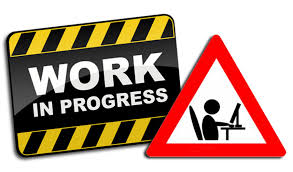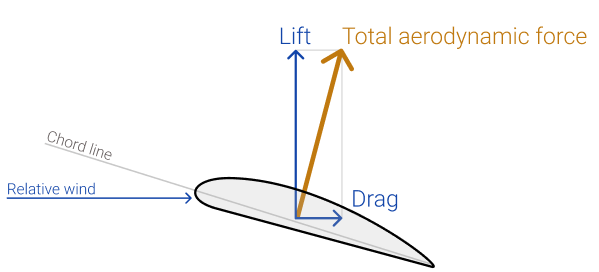
Pay attention that this page is under construction. Information inside can be read but shall not be taken as input for any exam or definite information.
¶ INTRODUCTION
There are 4 basic forces of flight: lift, weight, thrust and drag. Pilot books call these the four forces. Lift is the force that directly opposes the weight of an airplane and holds the airplane in the air.
¶ DESCRIPTION
The relative wind acting on the airplane produces a certain amount of force which is called the total aerodynamic force. This force can be subdivided into components, called lift and drag.

Lift is a mechanical aerodynamic force produced by the motion of the airplane through the air. Lift is generated by every part of the airplane, but most of the lift on a normal airliner is generated by the wings.
¶ GENERAL PRINCIPLE
Lift occurs when a moving flow of gas is turned by a solid object. The flow is turned in one direction, and the lift is generated in the opposite direction, according to Newton's Third Law of action and reaction.
The airflow over the wing increases its speed causing a reduction in pressure. This generates lift perpendicular to the chord of the aerofoil. The airflow below the wing moves much more slowly generating greater pressure and less or negative lift.
Lift is a function of aerofoil design, airspeed and angle of attack:
- lift increases with airspeed and decreases with falling airspeed;
- lift increases with angle of attack up to a maximum angle;
- stall occurs if the airspeed falls too low or if the angle of attack increases too much.
The shape of the wing cannot be effective unless it continually keeps "attacking" new air. If an aircraft is to keep flying, the lift-producing airfoil must keep moving.
Pilot can control the lift. Any time the control yoke or stick is moved fore or aft, the angle of attack is changed. As the angle of attack increases, lift increases (all other factors being equal). When the aircraft reaches the maximum angle of attack, lift begins to diminish rapidly. This is the stalling angle of attack.
- VID 531824 - Creation
- VID 496402 - Wiki.js integration.